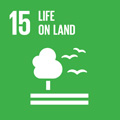- Docente: Riccardo Baroncelli
- Credits: 6
- SSD: AGR/12
- Language: Italian
- Moduli: Elena Baraldi (Modulo Mod 1) Riccardo Baroncelli (Modulo Mod 2)
- Teaching Mode: Traditional lectures (Modulo Mod 1) Traditional lectures (Modulo Mod 2)
- Campus: Bologna
- Corso: First cycle degree programme (L) in Land and Agro-Forestry Technologies (cod. 5831)
-
from Feb 17, 2025 to Mar 17, 2025
-
from Mar 20, 2025 to May 22, 2025
Learning outcomes
Students will acquire knowledge on: 1) general bases of plant diseases caused by biotic and abiotic agents; 2) measurement tools of disease; 3) measurement tools of pathogens 4) most important disease epidemiology, 5) principles of disease control.
Course contents
A) Prerequisites
Students attending this course must have good knowledge of microbiology, plant biology and physiology. Such skills are provided by the courses of the first and second years.
B) Teaching Units
The course includes two teaching units
1. General plant pathology
2 Plant diseases
1. General plant pathology (total teaching unit 30 hours)
Introduction to plant pathology (2 hours) – Brief background history of plant diseases. Economic and social importance of plant diseases.
Disease and pathogenesis concept (8 hours) - Definition of plant and crop disease. Abiotic and biotic diseases (infectious). Pyramid of the disease. Cycle of an infectious disease: inoculation (penetration), infection (multiplication), evasion and dissemination. Diagnosis of plant diseases. Koch’s postulates. Overview of epidemiology: monocyclic, polycyclic and polyetic diseases.
Pathogens (10 hours) - Main features (morphological, biochemical and biological) of fungi, oomycetes, bacteria, viruses and nematodes. Diagnostic techniques for oforest pathogens. Overview of pathogenesis and mechanisms of plant resistance to pathogens.
Plant- pathogen interactions. How pathogens attack plants and how plants defend themselves (preexisting and induced defences) (3 hours)
Plant protection at the international, national and regional level. Concept of quarantine organism and phytosanitary certification. Climate change and plant diseases (3 hours).
Elements of agronomic, chemical, physical, biological fight against plant diseases in a context of environmental sustainability (2 hours).
Abiotic diseases and alterations - Classification and importance of abiotic stresses (thermal, water, nutritional and extreme atmospheric events) and symptoms (2 hours).
Knowledge acquired in the teaching unit 1:
Plant pathology language
Different models of plant pathogens and their main characteristics.
Disease cycle in relation to pathogen, environmental factors and vegetative plant stage.
Measurement of plant disease
Principles of disease control
2. Plant diseases (total teaching unit 20 hours)
Economic importance, distribution, symptoms, epidemiology and control measures will be described for each disease.
Forest pathology (9 hours)
Cereals diseases (5 hours): Head blight (Fusarium spp.), Foot and root rot (Gaeumannomyces graminis tritici, Rhizoctonia cerealis, Pseudocercosporella herpotrichoides), Rusts (Puccinia spp.), Powdery mildew (Erysiphe graminis f. sp. tritici).
Grapevine diseases (5 hours): Downy mildew (Plasmopara viticola),grey mould (Botryotinia fuckeriana, an. Botrytis cinerea), powdery mildew (Uncinula necator, an. Oidium tuckeri), yellows disease .
Antrachnose in crops and natural ecosystems (5 hours)
Laboratory activity (10hrs)
Plant pathology lab knowledge, isolation of pathogens from plant tissue, identification at optical and stereo microscope of pathogen propagules
Readings/Bibliography
Vannacci (2021) Patologia Vegetale, EdiSES
Agrios G.N. (2005) Plant Pathology, Academic Press (USA)
Belli G. (2006). Elementi di Patologia Vegetale, Piccin Editore
Capretti P e Ragazzi A. (2009). Elementi di Patologia Forestale, Patron editore
Moriondo F. (1999). Introduzione alla patologia forestale, UTET
Teaching methods
1. Class lectures
2. Practical activity: the student will be directly involved in general practices commonly used in a laboratory of plant pathology in order to practically apply the theoretical knowledge acquired during lessons.
3. Guided tours: student will be accompanied in guided tours to experimental farms
Assessment methods
Verification of learning takes place in the sessions reported on Almaesami, through a written test lasting 35 minutes, concerning the entire program of both modules, without the help of notes or books. It consists of 26 questions, partly multiple choice and partly open-ended. Each question is awarded a maximum of one point. In the same session, students who have passed the written exam will be admitted to an interview to discuss with the teachers the answers provided in the assignment and deep some of the topics listed. In this phase, a further 4 points and eventually “laude” may be awarded.
Teaching tools
Lessons are held with PowerPoint presentations, educational films and the use of laboratory tools
Office hours
See the website of Riccardo Baroncelli
See the website of Elena Baraldi
SDGs



This teaching activity contributes to the achievement of the Sustainable Development Goals of the UN 2030 Agenda.
